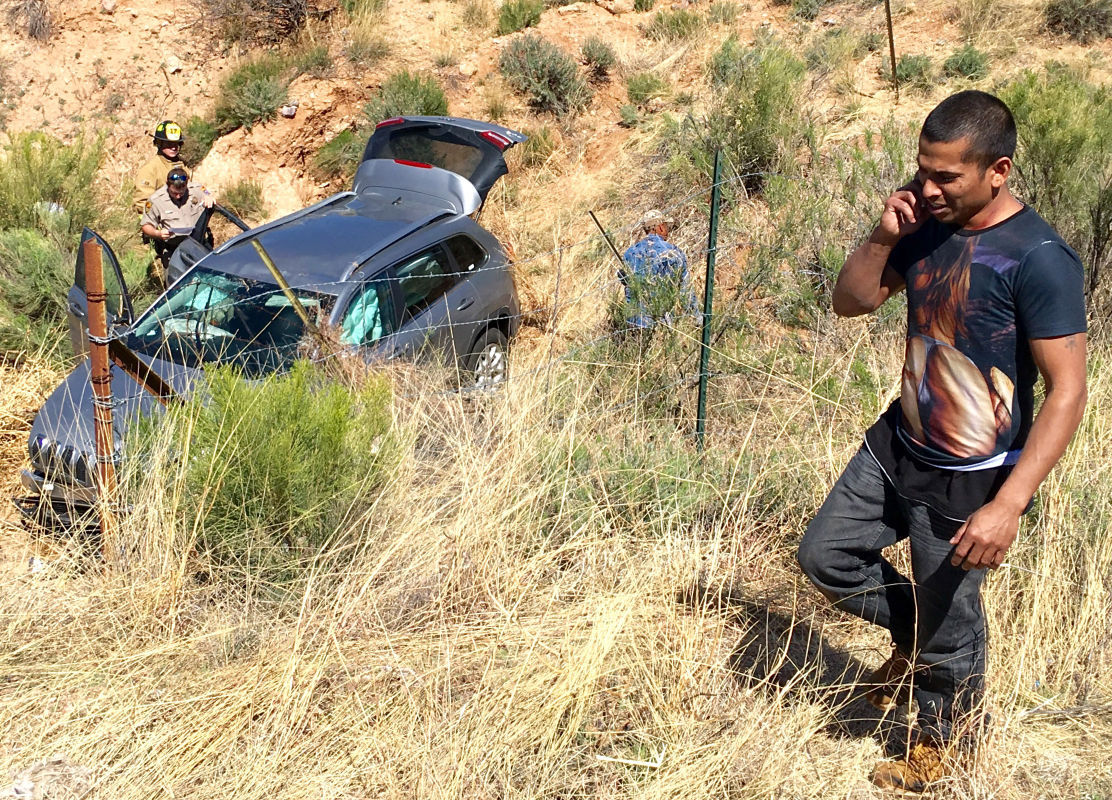Trick question: How much property tax will the people living in the Mescal-J6 Fire District pay this year?
The answer, for this year at least, depends on which side of the Pima-Cochise county line they live on.
On Aug. 15, the Pima County Board of Supervisors approved a tax rate of roughly $1.46 for every $100 of assessed value on their side of the line. That same day, the Cochise County Board of Supervisors approved a rate of $1.36 for the remainder of the district. Tax bills with the two different rates have been printed and sent out to property owners, and it looks doubtful that either board will revise the rate, officials from both counties said.
“They’ve already been levied, and the first half is already due,” said Deputy Pima County Administrator Tom Burke, who was recently directed to look into the matter. “I have not encountered this situation before.”
“I seriously doubt that the (Cochise Board of Supervisors) is going to want to raise the rates on our end,” Cochise County Administrator James Vlahovich said. “If Pima County wants to lower their rates, that’s on them, and they’ll have to figure out how to do rebates for people who have already paid their taxes.”
The Arizona Constitution states that “all taxes shall be uniform upon the same class of property within the territorial limits of the authority levying the tax.”
However, a state body tasked with overseeing property taxes likely doesn’t have the “authority to force” either of the counties to change their rates, according to emails provided by a district resident.
“Property owners should pay the same tax rate for the same level of service regardless of which county the property is located in,” reads an email from the Property Tax Oversight Commission’s Darlene Teller to the district’s Chief John Moran. “Please take appropriate action to coordinate the tax rate levied by each county for your district for future compliance.”
Teller later told the Star that Mescal-J6 is one of eight Arizona fire districts that cross county lines, and that there have been three other comparable instances of property tax discrepancies in recent years, though they were smaller than the current 10-cent difference. In all three instances the disparate rates remained through the tax year and were made uniform the following year, according to Teller.
Moran did not respond to several requests for comment.
The difference in tax bills due to the discrepancy will be small. A Pima County Treasurer’s Office employee confirmed Star calculations that a Pima residential property with a limited cash value of $150,000 will pay a little over $14 more than someone on the Cochise side of the line. The tax bill difference for all property on the Pima side, valued at around $3.9 million, is just shy of $3,800, according to calculations provided by Pima County.
Nevertheless, Mary McCool, a Cochise County resident of the district and chair of the local community development organization, said, “It is a matter of government being accountable for taxpayers’ money.”
“The thing of significance is that a communication breakdown occurred, and that never should have happened,” she added.
In the view of Pima County officials, the rate was set according to the process established by state statute: the fire board approved a budget over the summer and submitted a levy amount of $56,788 and a tax rate of $1.4599 for every $100 of valuation to Pima before Aug. 1, the deadline for such submissions.
“Pima County is required to levy taxes in the amount adopted by fire districts,” reads an Oct. 27 memo from Burke. “We believe that the Cochise County rate is understated, and that the Pima County rate is the appropriate rate.”
But several days after the Aug. 1 due date, Cochise County officials recalculated the tax rate based on what they said was a higher year-end balance than the fire district had calculated. In an Aug. 17 email, Moran wrote that the apparent oversight was due in part to the departure of an accountant in June.
“It took some time for the new CPA to learn our system and bring our books current,” he went on to write.
In his memo, Burke took issue with the basis of the recalculation, writing that “there is no indication” the higher cash balance cited by Cochise officials “was the same as the fund balance.”
In an Aug. 19 email, Pima County Budget Manager Robert Johnson wrote that if Cochise officials were correct, it did not appear that the fire district board then met to adopt a revised budget. Even if it had, Johnson said it would be a “moot point,” as final tax rates must be submitted by Aug. 1.
“The only notice that Pima County received regarding the tax rate was the fire district’s submission of July 29, 2016, notifying us of the $1.4599 rate,” he wrote.
“We levy the taxes that are given to us by taxing jurisdictions,” Burke told the Star. “We don’t review and edit them.”
Regardless of which county is correct, every official interviewed said they hope to avoid a repeat next year. Vlahovich said his office is preparing a joint resolution for the two counties to help officials “work together in advance” to prevent what he described as an “anomaly.”
McCool said she was pleased to hear such steps were being taken but is waiting to hear the “details” of the agreement.
“That is the key thing that we are asking, is that procedures and policies are put in place to prevent this from happening again,” she added.
McCool, who lives on the Cochise side, suggested with a laugh that perhaps she and others set to pay lower taxes this year could put on a “fireman’s ball” for their Pima County neighbors.





